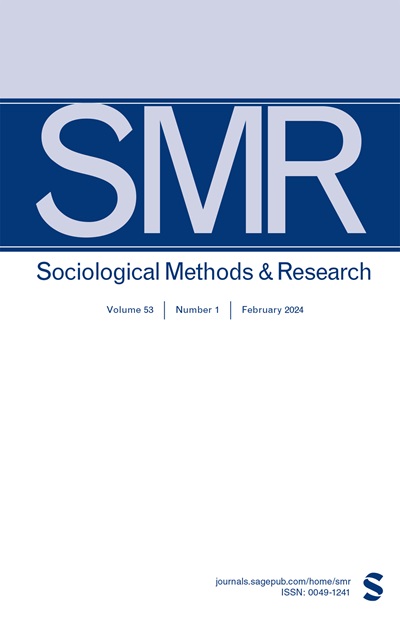Deceptively Approachable: Translating Standards in Qualitative Research
IF 6.5
2区 社会学
Q1 SOCIAL SCIENCES, MATHEMATICAL METHODS
引用次数: 1
Abstract
Qualitative research is deceptively approachable. With no high-end statistics or computational methods, outsiders and novices alike often feel that they can judge such research “cold,” having neither thought much about it, much less practiced it. After all, they can read the text and understand it, especially when qualitative researchers often take pains to make their prose readable. This has unfortunate results: It creates a lot of random noise in evaluation, but it also means that evaluators will tend to revert to their implicit habits of evaluation —either based on prior theoretical and political commitments, or developed through work with very different methods—when they sit on recruitment, funding, or award committees. At the heart of Small and Calarco’s Qualitative Literacy there is thus a seemingly simple question: How do we know good qualitative research when we see it? How can we tell when it isn’t? When we teach and read quantitative research, we have a more-or-less agreed upon sense of the way methods should be used and evidence should be supported. While there is never complete agreement, reviews of quantitative work tend to converge around a statistically-defined shared set of standards. Qualitative research is a different beast. While qualitative researchers usually detect good research when they see it, they seem to have a harder time turning this implicit knowledge of craft into a set of guidelines. If the impetus of the book already makes it worthwhile, the key move it makes is as important: rather than gravitating towards quantitative standards and attempting to make qualitative research as close as possible to quantitative reasoning, Small and Calarco (much as Small did in his How many cases do I need?) are adamant that the standards are both rigorous, and quite different. Book Review Symposium: Qualitative Literacy具有欺骗性的可接近性:质性研究中的翻译标准
定性研究是容易接近的。由于没有高端的统计数据或计算方法,局外人和新手都经常觉得他们可以“冷酷”地判断这种研究,他们既没有思考过,也没有实践过。毕竟,他们可以阅读并理解文本,尤其是当定性研究人员经常煞费苦心地让他们的文章可读性强的时候。这带来了不幸的结果:它在评估中产生了很多随机的噪音,但这也意味着评估人员在参与招聘、资助或奖励委员会时,会倾向于恢复他们固有的评估习惯——要么是基于先前的理论和政治承诺,要么是通过非常不同的方法发展起来的。因此,斯莫尔和卡拉科的《定性素养》一书的核心是一个看似简单的问题:当我们看到定性研究时,我们如何知道它是好的?我们怎么知道什么时候不是呢?当我们教授和阅读定量研究时,我们对方法的使用方式和证据的支持方式有一个或多或少的共识。虽然从来没有完全一致的意见,但对定量工作的审查往往集中在统计定义的共享标准集上。定性研究是另一回事。虽然定性研究人员通常在看到好的研究时就能发现它,但他们似乎很难将这种隐性的工艺知识转化为一套指导方针。如果这本书的动力已经使它值得,那么它所做的关键举动同样重要:而不是被定量标准所吸引,并试图使定性研究尽可能接近定量推理,斯莫尔和卡拉科(就像斯莫尔在他的“我需要多少案例?”中所做的那样)坚持认为标准既严格又截然不同。书评研讨会:定性素养
本文章由计算机程序翻译,如有差异,请以英文原文为准。
求助全文
约1分钟内获得全文
求助全文
来源期刊

Sociological Methods & Research
Multiple-
CiteScore
16.30
自引率
3.20%
发文量
40
期刊介绍:
Sociological Methods & Research is a quarterly journal devoted to sociology as a cumulative empirical science. The objectives of SMR are multiple, but emphasis is placed on articles that advance the understanding of the field through systematic presentations that clarify methodological problems and assist in ordering the known facts in an area. Review articles will be published, particularly those that emphasize a critical analysis of the status of the arts, but original presentations that are broadly based and provide new research will also be published. Intrinsically, SMR is viewed as substantive journal but one that is highly focused on the assessment of the scientific status of sociology. The scope is broad and flexible, and authors are invited to correspond with the editors about the appropriateness of their articles.
 求助内容:
求助内容: 应助结果提醒方式:
应助结果提醒方式:


